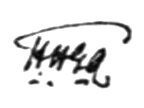Henry Haversham Godwin-Austen | |
|---|---|
 Godwin-Austen in an image published in 1890 | |
| Born | H.H. Austen 6 July 1834 Newton Abbot, England |
| Died | 2 December 1923 (aged 89) Godalming, England |
| Alma mater | Royal Military College, Sandhurst |
| Spouses | Kudidje (1858–1860?); Pauline G. Plowden (1861–1871); Jessie Robinson (1881–1913) |
| Children | 3 |
| Awards | FRS, Founder's Medal of RGS |
| Scientific career | |
| Fields | Topography, surveying, malacology, ornithology, geology |
| Institutions | Trigonometrical Survey of India |
| Author abbrev. (zoology) | Godwin-Austen |
| Signature | |
 | |
Lieutenant-Colonel Henry Haversham Godwin-Austen FRS FZS FRGS MBOU (6 July 1834 – 2 December 1923), known until 1854 as Henry Haversham Austen, was an English topographer, surveyor, naturalist and geologist.
He explored the mountains in the Himalayas and surveyed the glaciers at the base of K2, also known as Mount Godwin-Austen. Geographer Kenneth Mason called Godwin-Austen "probably the greatest mountaineer of his day".[1] He also remains the most important investigator of the terrestrial molluscs of the Indian subcontinent.
- ^ Mason, Kenneth (1955). Abode of snow: a history of Himalayan exploration and mountaineering from earliest times to the ascent of Everest. London: Rupert Hart-Davis. ISBN 978-0906371916.